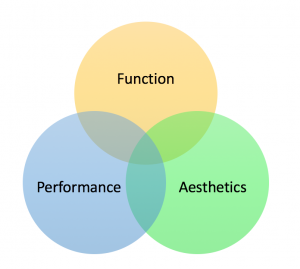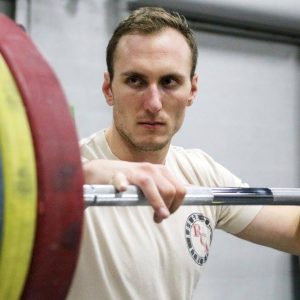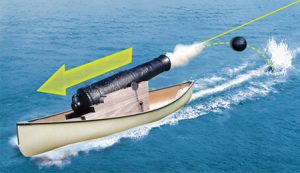Hypertrophy-Stability-Motor Control Continuum
Since I’m still on vacation, Sam Spinelli was kind enough to write a follow-up piece to the one he put out on Monday. I hope you enjoy it.
We are going to begin examining a concept that should be considered when creating a program for rehab or performance that often gets neglected, or at least not given true attention. We won’t go too far down the programming rabbit hole, but keep it more superficial and focused on this topic. When designing a program, the main factor to consider is the person’s goal and what is required to reach that goal. In general, most people are looking for either some form of athletic improvement or physique improvement. For some it may be to crush a marathon and therefore we need improved aerobic capacity through greater mitochondrial density, for others it might be to be a better defensive end and we increased power through greater utilization of the type 2 fibers.

With that said, there could be a vast array of options to address each person’s goals. However, there will always be a relative degree to how much the option we select does work on the option we want, as well as other factors. This is due to the fact that we cannot isolate a single physiological quality at a time when we train. For example, there is no way to exclusively work on strength without having some by product towards multiple other traits. This is not necessarily a bad thing, but something to consider when selecting exercises and methods to target your goals.
When we begin to look to hypertrophy, this point is greatly exemplified. Hypertrophy in its essence means bigger muscles. There are a few major contributing factors to hypertrophy – mechanical tension, muscle damage, and metabolic stress. Due to the factors that influence it, we can chase down a hypertrophic stimulus through a variety of methods and exercises.
Stability is the capacity to resist change. When we are discussing stability and humans, we are usually discussing a neuromuscular factor that is heavily regulated by motor control. This is a very important concept for many reasons, but in regards to hypertrophy it relates highly to mechanical tension. In order to get a good hypertrophy stimulus, we need to create sufficient mechanical tension – which can be greatly swayed by stability/motor control.
There are two main ways stability influences mechanical tension. When a muscle goes to contract, the nervous system has a great deal of input coming in and if it perceives danger, level of contraction can be limited. The second way, not often discussed, is if a muscle is attempting to contract but the insertion points for it to pull from are not sufficiently stable, due to a lack of motor control, then we can see a limited production of force. This is where exercise selection and goals begin to interact more.
As we begin to look at exercise selection in creating a program, we must consider the degree of hypertrophy stimulus vs motor control needed by the individual. To help present this thought process we are going to look at a few exercises below to help an individual improve overhead pressing and we will consider the timing of the usage in long term development for a water polo player.
These four exercises below show us the spectrum of focus on hypertrophy <—> motor control. If we look at the ends of the spectrum and were to aim to solely to develop primarily only one quality at a time, we would have to consider the relatively stability of the exercise. When trying to focus on hypertrophy, we want an exercise with high stability that provides the individual with minimal need to focus on control. In contrast, when focusing on motor control for sport/activity development we are going to decrease the relative stability of the exercise and incorporate a greater degree of other joints to challenge the exercise.
Seated 1 arm DB press
During the seated 1 arm press we have 4 major points of support through our back from the chair, contact through the seat to our pelvis, and then both feet on the ground. This creates a high amount of static stability for the system and reduces the demand on dynamic stability from the nervous system to generate.
Half kneeling 1 arm press
Transitioning to the half kneeling 1 arm press, we go to 3 points of contact to the ground with our front foot, knee, and back foot. As well, in the first example the shoulder was also provided a stable environment to support it (the chair) which has now been removed. This alteration will limit force production slightly and increase the demand on motor control – particularly in the trunk.
1 arm press – contralateral front foot elevated on box
When we move to the 1 arm press – contralateral front foot elevated on box, we could take a snap shot of this and the previous movement and not be able to distinguish them. If stability was not a factor, someone should be able to lift the same amount of weight. However, that is not the case. Moving to two points of contact and a reduced size of the base of support has required the individual to create more dynamic stability coming from the neuromuscular system.
1 arm press – ipsilateral single leg stance
Finally, in the 1 arm press – ipsilateral single leg stance, we have reduced the points of contact to only one foot, decreasing our base of support drastically, and then also elevating the other leg to further challenge control of the ankle, hips, and trunk. This further elicits the point we discussed previously.
Looking at the four exercises, we can see the trend from lower demand on stability to higher dynamic stability demand going from the seated db press to the ipsilateral single leg stance.
This spectrum of exercises is important to consider when we are planning out an athletes development. If we were looking to purely improve hypertrophy, we would want the person to utilize the seated 1 arm press as they can focus on that and utilize a higher relative weight than with the other exercises. This would be well utilized in a very early training phase when the athlete is in the off-season, recovering from the season or just beginning to get back into training. As their off-season progresses and we are now looking to ramp up their training and get more directed to sport development, we would begin to work our way through these exercises.
The same spectrum exists for most exercises – having some version that is more or less stable – which should be considered in selecting based upon the individual’s primary goals.
Move well, lift heavy, stay healthy,
Sam Spinelli


2 Responses to Hypertrophy-Stability-Motor Control Continuum